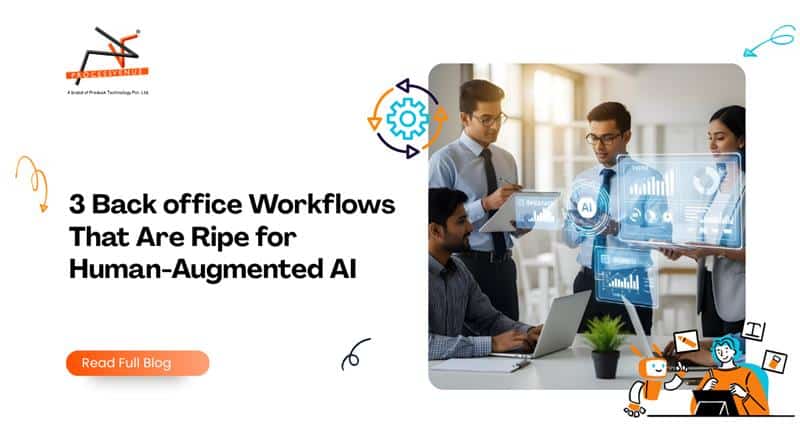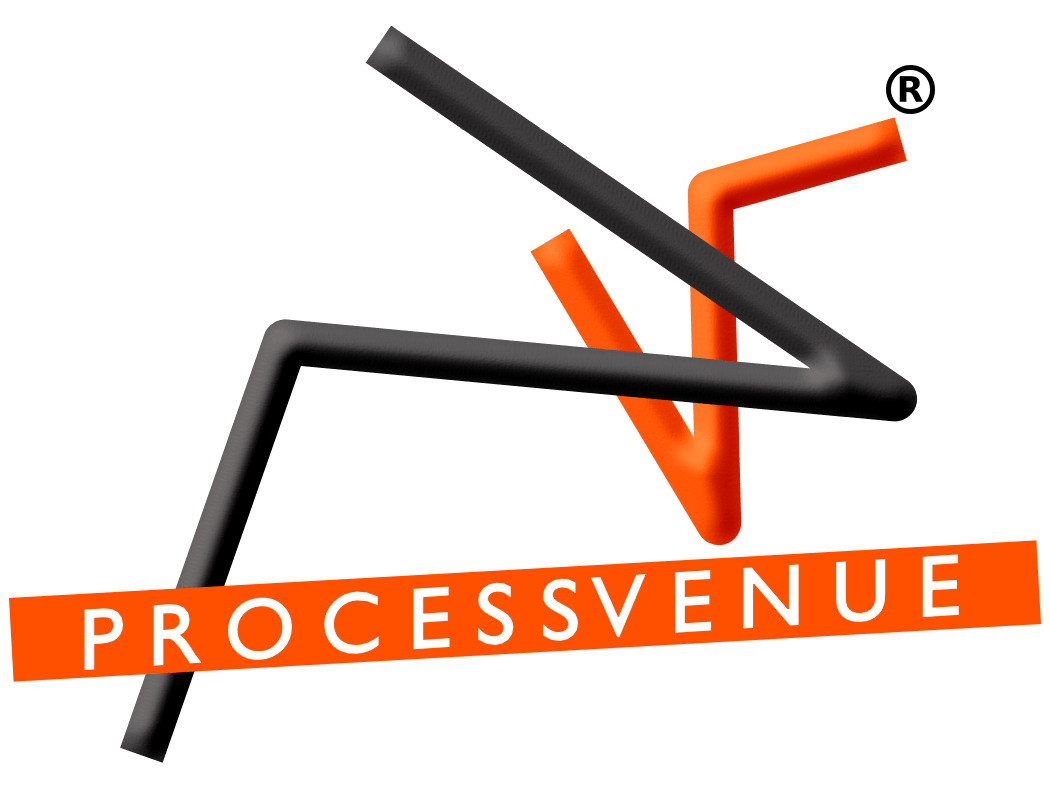
3 Backoffice Workflows That Are Ripe for Human-Augmented AI
At a recent industry networking event, I had a conversation with the Vice President – Shared Services of a large retail company. After the usual pleasantries were exchanged, in a moment of candidness he said, “Our back-office operations are stretched to the limit. You know, we are processing nearly twice the volume we handled last year, with the same number of resources.” Pausing for a moment, he further added, “My employees are fatigued, there’s a noticeable slowdown in processes, and an increasing risk of errors creeping in. When we try to address one bottleneck, another emerges almost immediately.”
His words reflected a reality I have encountered across many organizations—the ongoing struggle to scale operations efficiently without compromising quality or exhausting internal teams.
Is your company struggling with maintaining efficiency and scaling operations at the same time? In this fast-paced world of business, this can seem like a daunting challenge. As backoffice services expand, it doesn’t take long to run into familiar roadblocks—rising burnout across teams and growing inefficiencies in workflows. The pressure to deliver more without compromising quality is always building. That’s where Human-Augmented AI can help you.
The Rise of the HAI Model in Back-Office Automation
AI can handle repetitive tasks efficiently and accurately, but it often lacks nuance. Human AI collaboration—or Human-Augmented AI (HAI)—combines the best of both the worlds.
Broader studies indicate that working with AI is equivalent to having another human teammate: tasks are completed 12–16% faster, with higher quality output—and especially beneficial when humans work alongside AI rather than alone. For example productivity gains of up to 59% in document processing tasks have been reported in Human-AI models.
Interestingly, AI also helps in reducing burnout and manual task load significantly. According to Gitnux, one of the market research platforms, AI has reduced agent burnout by automating routine tasks, leading to about 15% fewer sick leaves.
HAI In Action
Use Case 1: Finance & Accounting – Invoice Verification
Enhancing Accuracy with AI Validation
In finance and accounting, the verification of invoices is a critical yet labor-intensive process. Traditionally, this involves manual cross-checking and extensive data entry, making it prone to human error and inefficiency. However, by utilizing AI for validation, back offices can significantly streamline this workflow.
Vitality of Human Oversight
Imagine an intelligent system that can automatically scan and verify invoices against historical data, identify discrepancies, and flag items that need human review. By implementing HAI in this workflow, companies can dramatically reduce processing time.
Real-world examples show that back offices using AI augmentation for invoice verification have successfully increased their output without expanding their workforce. Front-line employees can then focus on higher-level tasks—like negotiating with clients or managing vendor relationships—further enhancing operational efficiency.
Use Case 2: Data Management – Data Cleansing and Labelling
Streamlining Data Processes
Data management remains a core challenge for backoffice automation. As companies amass vast quantities of data—from customer interactions to transaction histories—the importance of data integrity cannot be overstated. Poorly managed data can lead to erroneous conclusions and misguided strategies.
AI for Cleaning and Labelling Data
In this use case, AI plays a pivotal role in cleansing and labelling data. By using machine learning algorithms, backoffices can automate the identification and correction of inaccuracies within their datasets. Not only does this save significant time, but it can also result in up to 50% more accurate data, according to research by leading data science firms.
Human Review for Accuracy
However, while AI is efficient at processing large volumes of data, it still requires human oversight for final validation. A skilled employee can examine flagged data, applying nuanced judgment that AI may overlook. This hybrid approach ensures companies maintain high-quality data standards while benefitting from lower operational costs and faster turnaround times.
Use Case 3: Digital Marketing – Campaign Drafting
Streamlining Campaign Creation
In the digital marketing sphere, speed and relevance are critical for campaign success. Marketing teams often juggle multiple clients, each requiring tailored marketing strategies. In a landscape inundated with information, the need for personalization creates further complexity.
AI in Campaign Drafting
Through HAI, marketing can leverage AI to draft initial campaign outlines based on historical data and market trends. Such AI systems can rapidly generate targeted content, analyze customer interactions, and even suggest optimal timings for campaigns. Research indicates that businesses using AI for campaign drafting can see a 30-40% increase in engagement rates, making a compelling case for adoption.
Human Expertise for Brand Voice Finalization
Despite the effectiveness of AI, human touchpoints remain crucial in this workflow. Marketing specialists can finalize campaigns by reviewing drafted content, ensuring it aligns with the brand voice and resonates with target audiences. This collaboration not only enhances the quality of marketing materials but also ensures that ethical considerations and brand values are maintained throughout the process.
Embracing Intelligent Process Automation
Integrating Human-Augmented AI into core workflows is no longer just an option—it’s becoming a strategic necessity. Across the backoffice landscape, intelligent process automation is taking hold, combining the speed and precision of AI with the judgment and flexibility of human expertise. This approach is driving more than just efficiency gains; it’s creating stronger, more motivated teams and building workflows that scale without sacrificing quality.
Why Human-Augmented AI Is the Smarter Choice
- Scalability: Scaling projects is becoming smoother, with less reliance on growing headcount.
- Reduced Burnout: As repetitive tasks shift to AI, teams are focusing on higher-impact work—keeping engagement high and turnover low.
- Enhanced Accuracy: Blending AI’s speed with human insight is improving accuracy, reducing errors, and delivering better results across every workflow.
Looking Ahead: The Future of AI in Outsourcing Services Is Human + AI
Human-Augmented AI is opening up new possibilities for BPOs in how they can help their clients to grow without growing operational pain. In finance, data management, and digital marketing, real-world use cases are showing how this model reduces inefficiencies, speeds up delivery, and creates space for smarter decision-making.
As the industry continues evolving, the real advantage lies in building a culture where humans and AI work side by side. Companies that are embracing AI augmentation now are not just keeping up—they’re setting the pace in the outsourcing services industry.
So, are you ready to take a bold step in revolutionizing your backoffice workflows? Embrace Human-Augmented AI today to unlock new levels of efficiency, accuracy and employee satisfaction in your BPO operations. Don’t let inefficiencies hold your organization back.
Reach out to us at ProcessVenue, where we can help you learn how to implement Human-Augmented AI solutions in your back-office workflows and experience the transformative benefits firsthand!
FAQs
What is Human-Augmented AI (HAI)?
Human-Augmented AI (HAI) refers to the collaboration between artificial intelligence and human expertise to enhance operational efficiency. By combining AI’s ability to process large amounts of data with human judgment and creativity, organizations can streamline various workflows, thereby improve productivity and reduce operational costs.
How can HAI reduce burnout in the BPO workforce?
HAI minimizes employee burnout by automating repetitive tasks, allowing employees to focus on higher-value activities. Research shows that companies using HAI experience a decrease in manual task load, leading to about 15% fewer sick days among employees. This shift not only improves workforce morale but also enhances overall productivit.
Why is human oversight necessary in AI-powered data management?
While AI can efficiently clean and label massive datasets, it may misclassify complex or ambiguous entries. Human oversight ensures the final output is contextually accurate and aligned with business goals. This collaborative approach ensures data integrity, mitigates risk, and improves the accuracy of strategic decisions based on that data.
Why should BPOs invest in HAI technologies?
Investing in HAI can lead to substantial gains in operational efficiency—up to 45% by 2025—while also fostering a more engaged workforce. As BPOs implement intelligent process automation, they can address the challenges of scaling operations without compromising on service quality. Embracing this technology positions companies to thrive in a competitive landscape.
